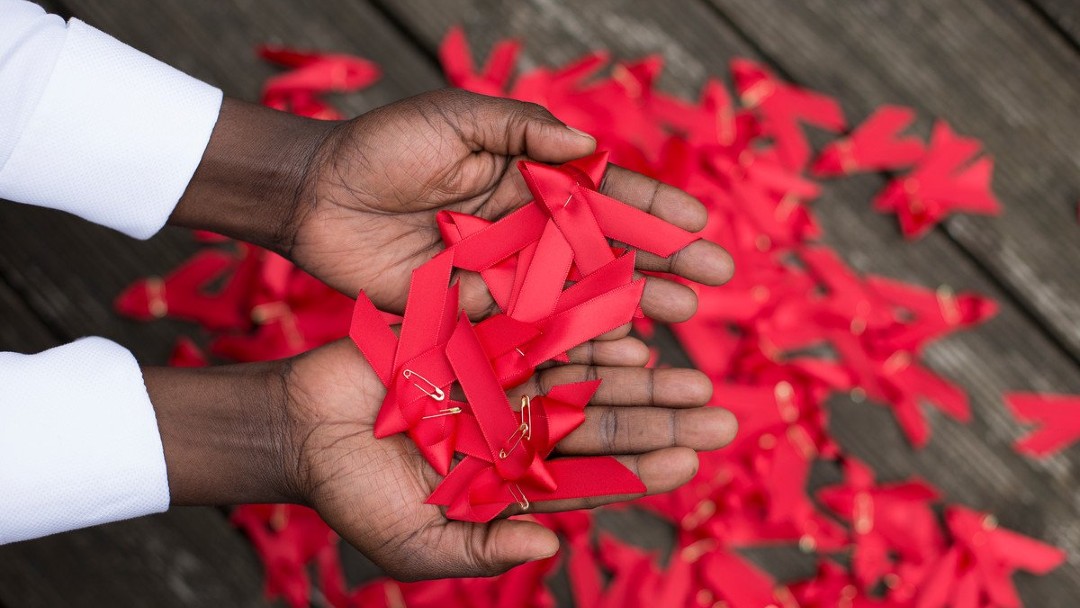Our acute hospitals will be lit up red on Sunday to mark World AIDS Day, as staff and the public are urged to show their support by wearing a red ribbon.
Over the last four decades we have seen great advances in the prevention, diagnosis and treatment of HIV/AIDS. HIV can now be regarded as a long-term medical condition that is easily treated (but NOT cured) with modern medicines. Someone diagnosed with HIV in 2024, who adheres to their medication, can anticipate a normal life expectancy – as long as they have not been diagnosed too late.
NHS Lanarkshire Blood Borne Virus (BBV) Network Lead Clinician and Infectious Diseases Consultant Dr Nick Kennedy said: “At 31 December 2023, an estimated 6761 people were living with HIV in Scotland – 582 of them in Lanarkshire.
“So HIV still remains an important health issue. We’re now seeing a change in who is acquiring HIV, with heterosexual transmission becoming a real concern.
“Public Health Scotland’s most recent report – HIV in Scotland: update to 31 December 2023 – highlighted that, during 2023, a total of 385 new reports of people living with HIV were recorded in Scotland. This was the highest number of reports recorded in 10 years and was a four per cent increase compared to the next highest year.”
- For the second successive year, the majority of new reports (67 per cent, 259/385) were of previously known diagnoses, largely due to a continued increase in infections acquired through heterosexual sexual intercourse and diagnosed outside Scotland.
- Late diagnosis of HIV is still a problem. In 2023, 16 per cent (20 out of 126) of first ever HIV diagnoses in Scotland were still identified at a late or very late stage of infection. Work is being undertaken across Scotland, led in Lanarkshire by Dr Clair McGoldrick, Consultant in Infectious Diseases at University Hospital Monklands, to understand more about late diagnosis and support education and testing in primary and secondary care. The aim is to promote earlier diagnoses and avoid late diagnoses and preventable harms including onward transmissions.
- Early diagnosis and HIV treatment is key to suppressing the virus and reducing the risk of transmission. At December 2023, 93 per cent (6288) of the estimated cohort of 6761 people living with HIV in Scotland had been diagnosed. Of those, 78 per cent were recorded as receiving treatment in the previous 18 months and, among them, 97 per cent had a suppressed viral load.
- Early diagnosis is an area where we all still need to do better. HIV testing rates need to increase, particularly in non-sexual health settings in primary and secondary care. Offering an HIV test is easy: all doctors, nurses and midwives should be able to obtain verbal consent for one.
- HIV indicator conditions: people presenting with symptoms or signs of a condition that signifies an increased probability of underlying HIV infection should be offered an HIV test. Please see this information – there is almost certainly at least one indicator condition that applies to your specialty. We generally recommend requesting a full BBV screen (HIV, HCV and HBV) when testing for HIV. An order set is available on TrakCare.
- NHS Education for Scotland have a short animation on TURAS to help support education and training for staff. For more information go to Terrence Higgins Trust Scotland or National AIDS Trust.
- If you have any questions regarding testing or anything else, please contact the HIV service at University Hospital Monklands or in Sexual Health services – ID-BBVservice@lanarkshire.scot.nhs.uk.



